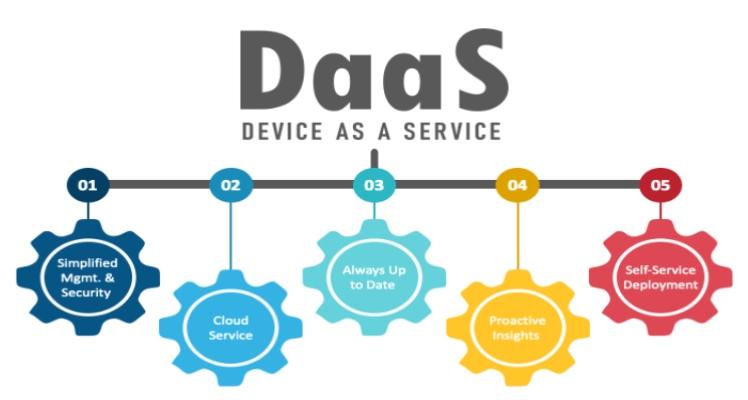The distribution of the global Device as a Service Market Share is a direct and powerful reflection of the underlying structure of the global personal computing industry. The market share is highly concentrated at the top, with the three major global PC Original Equipment Manufacturers (OEMs)—Dell Technologies, HP Inc., and Lenovo—commanding the lion's share of the total market revenue. Their dominant market share in DaaS is a natural and logical extension of their long-standing dominance in the PC hardware market itself. As the primary manufacturers of the laptops and desktops that form the core of most DaaS contracts, they are in an unparalleled position to offer a comprehensive, first-party DaaS solution. They control the product, the supply chain, and, in many cases, the direct sales relationship with the world's largest enterprise customers. This gives them an immense structural advantage that is incredibly difficult for any other type of player to challenge at a global scale. The market share at the top level is therefore a clear oligopoly.
The OEMs have skillfully leveraged their inherent advantages to build and maintain this dominant market share. They have built out comprehensive DaaS portfolios that wrap a full suite of lifecycle services around their own hardware. They leverage their massive global supply chains to handle the complex logistics of procuring and deploying thousands of devices to a customer's employees around the world. They have established their own captive financing arms or deep partnerships with financial institutions to offer the attractive leasing and subscription pricing that underpins the DaaS model. They utilize their vast, global networks of service technicians to provide on-site support and repairs. Most importantly, they have dedicated, enterprise-level sales forces that have spent decades building deep relationships with the CIOs and IT procurement departments of the Fortune 1000. For a large multinational corporation looking for a single, global, strategic partner to manage its entire PC fleet, the OEM-direct DaaS offering is a powerful and often default choice, which is the primary reason for their consolidated market share.
However, a more nuanced analysis of market share must look beyond just the top-line revenue booked by the OEMs and consider the crucial role of the channel. While the OEMs may be winning the contracts and booking the revenue, a very significant portion of the actual service delivery—particularly for the vast small and medium-sized business (SME) market—is fulfilled by their extensive network of channel partners. This includes thousands of Managed Service Providers (MSPs) and value-added resellers (VARs). An MSP will typically build its own branded DaaS offering using the hardware from one of the major OEMs, but they will "own" the customer relationship and provide the front-line support and management services. Therefore, while the "share of hardware revenue" is highly concentrated with the OEMs, the "share of service delivery" and the "share of the customer relationship" are much more fragmented. The channel collectively holds a massive and vital share of the services component of the market, creating a complex and interdependent ecosystem where the OEMs' market share is fundamentally enabled by the success of their channel partners. The Device as a Service Market size is projected to grow to USD 1804.35 Billion by 2035, exhibiting a CAGR of 25.64% during the forecast period 2025-2035.
Top Trending Reports -
Canada Application Hosting Market



